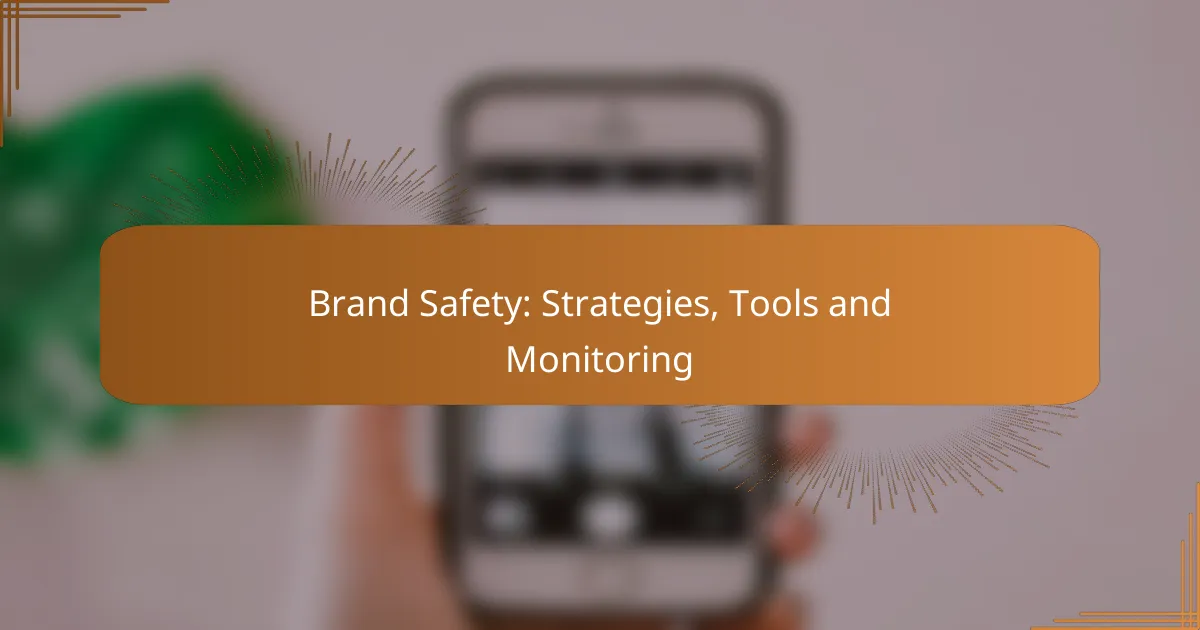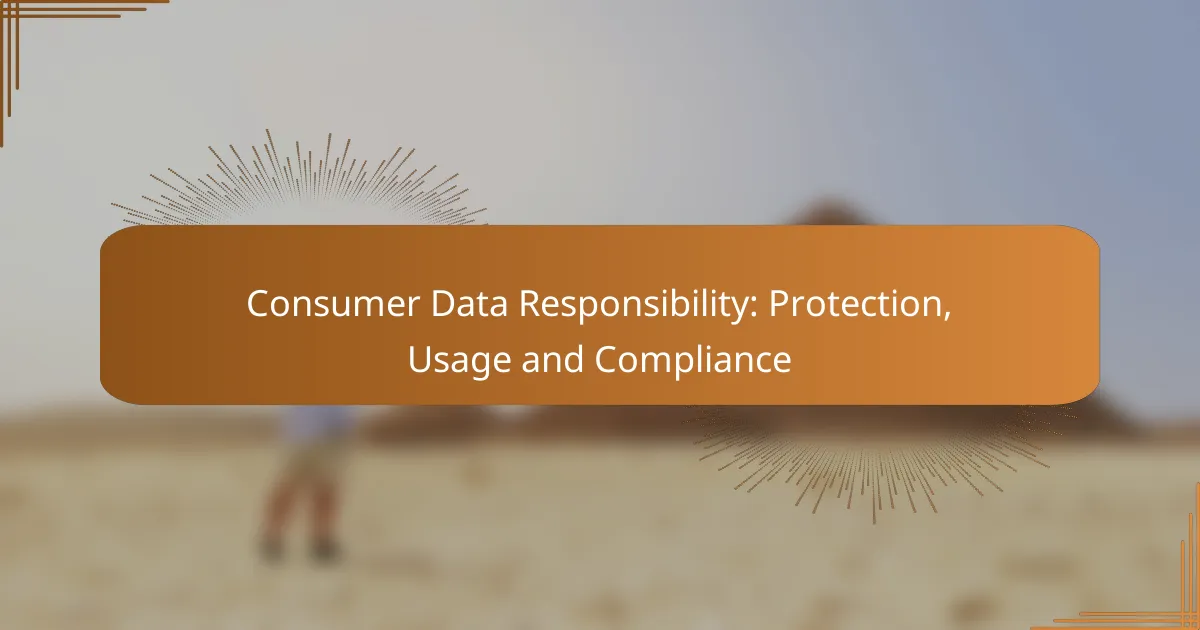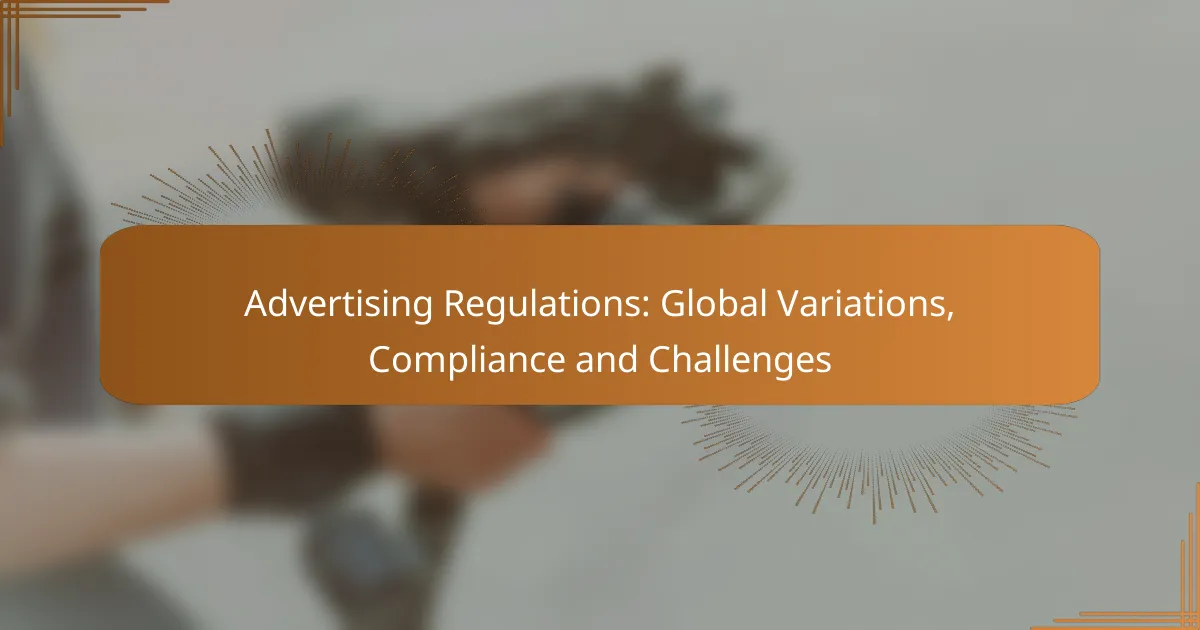Brand safety is crucial in display advertising, focusing on minimizing risks while preserving brand integrity. Effective strategies include contextual targeting, managing whitelists and blacklists, and utilizing ad verification tools. By implementing robust monitoring practices and leveraging essential tools, brands can protect themselves from harmful content and ensure their advertisements appear in suitable contexts.
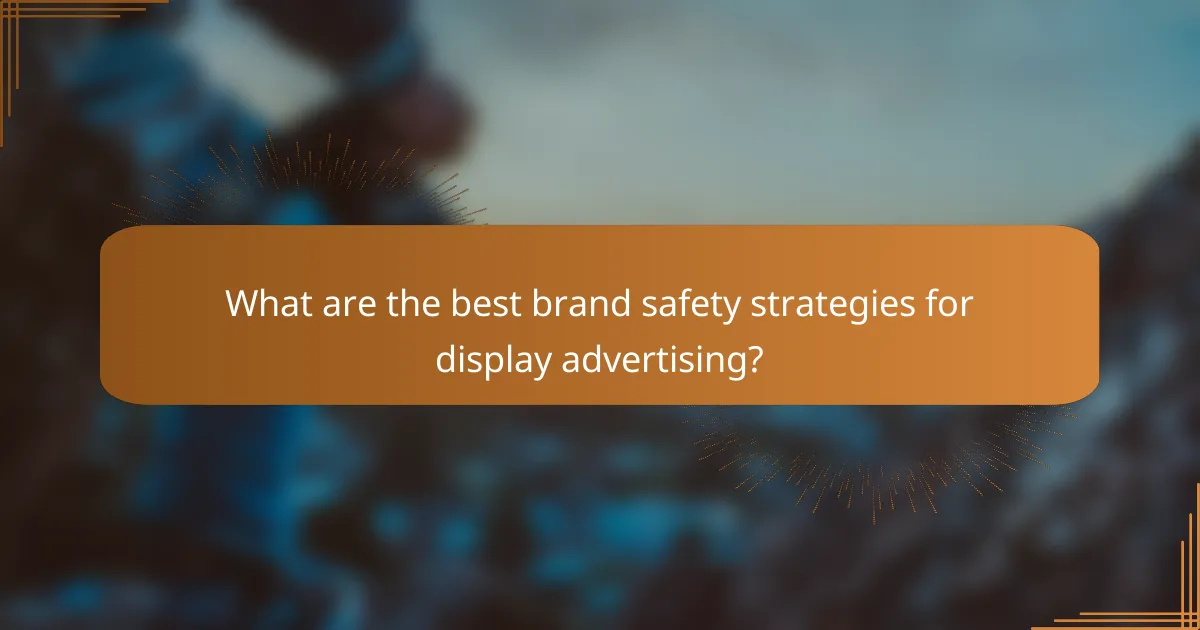
What are the best brand safety strategies for display advertising?
The best brand safety strategies for display advertising focus on minimizing risks associated with ad placements while maximizing brand integrity. Key approaches include contextual targeting, whitelist and blacklist management, ad verification tools, content moderation, and establishing brand safety partnerships.
Contextual targeting
Contextual targeting involves placing ads on websites or content that align with the brand’s values and messaging. This strategy helps ensure that ads appear in relevant environments, reducing the risk of negative associations. For example, a health brand may choose to advertise on wellness blogs rather than general news sites.
To implement contextual targeting effectively, use tools that analyze content categories and keywords. This allows advertisers to select placements that resonate with their target audience while avoiding potentially harmful contexts.
Whitelist and blacklist management
Whitelist and blacklist management is crucial for controlling where ads are displayed. A whitelist includes approved sites where ads can appear, while a blacklist contains sites to avoid. Regularly updating these lists helps maintain brand safety by preventing ads from showing on inappropriate or harmful websites.
Consider using automated tools to streamline the management process. These tools can help identify new sites that align with your brand’s values and flag those that may pose risks, ensuring that your advertising remains effective and safe.
Ad verification tools
Ad verification tools assess the safety and quality of ad placements in real-time. These tools can check for issues such as ad fraud, viewability, and placement on inappropriate content. Utilizing such tools can significantly enhance brand safety by providing insights into where and how ads are being displayed.
When selecting ad verification tools, look for features that align with your specific needs, such as brand safety filters and reporting capabilities. This ensures that you can monitor ad placements effectively and make informed decisions about your advertising strategy.
Content moderation
Content moderation involves overseeing user-generated content on platforms where ads are displayed. Effective moderation helps prevent ads from appearing alongside harmful or offensive content. Brands should establish clear guidelines for acceptable content and utilize moderation tools to enforce these standards.
Implementing a combination of automated moderation and human oversight can enhance the effectiveness of this strategy. This dual approach allows for quick responses to inappropriate content while ensuring nuanced understanding of context.
Brand safety partnerships
Forming brand safety partnerships with trusted organizations can strengthen your advertising strategy. These partnerships can provide access to industry insights, best practices, and tools designed to enhance brand safety. Collaborating with experts can help brands navigate the complexities of digital advertising.
Consider joining industry groups or working with third-party companies specializing in brand safety. This collaboration can lead to shared resources and knowledge, ultimately improving your brand’s safety measures in display advertising.
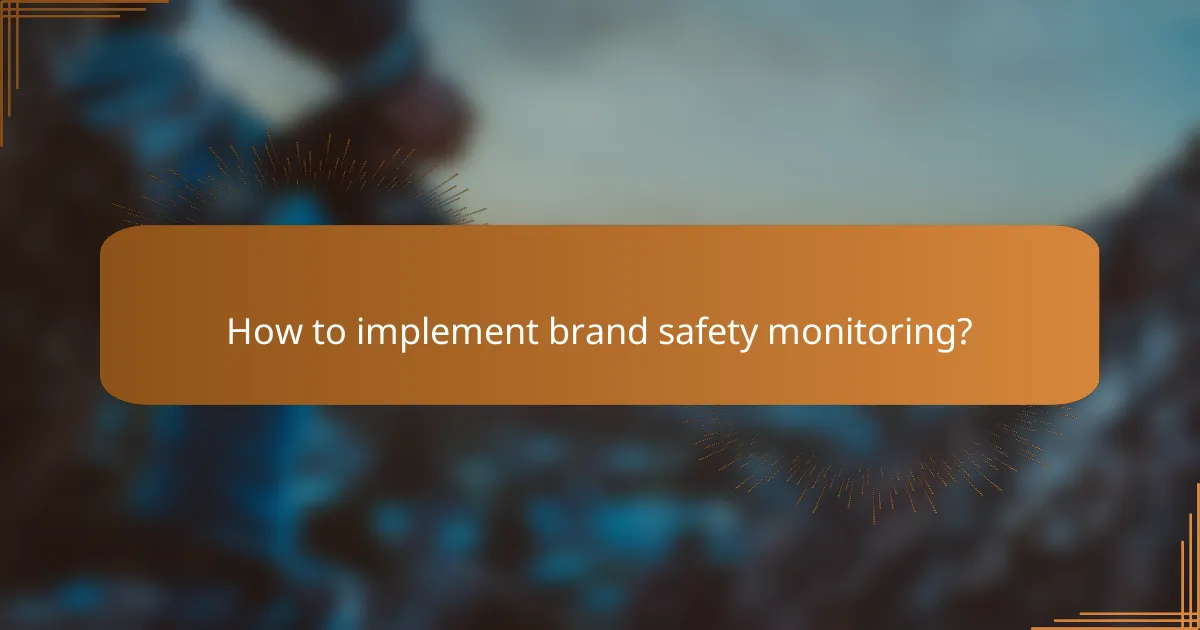
How to implement brand safety monitoring?
Implementing brand safety monitoring involves using various strategies and tools to ensure that your brand is protected from harmful or inappropriate content. This process includes real-time monitoring, regular assessments, and tracking performance metrics to maintain a safe advertising environment.
Real-time monitoring tools
Real-time monitoring tools are essential for identifying and addressing brand safety issues as they occur. These tools scan digital content across platforms to detect any harmful associations or inappropriate placements that could negatively impact your brand image.
Popular tools include brand safety solutions like Integral Ad Science, DoubleVerify, and Moat. These platforms provide insights into ad placements, ensuring that your ads appear in safe environments and comply with industry standards.
Regular audits and assessments
Conducting regular audits and assessments helps to evaluate the effectiveness of your brand safety strategies. This process involves reviewing ad placements, content associations, and compliance with established brand safety guidelines.
Consider scheduling audits quarterly or bi-annually to stay updated on potential risks. Engaging third-party auditors can also provide an unbiased perspective on your brand safety measures and highlight areas for improvement.
Performance metrics tracking
Tracking performance metrics is crucial for understanding the impact of your brand safety efforts. Key metrics to monitor include viewability rates, brand safety incidents, and engagement levels in safe versus unsafe environments.
Utilize dashboards that consolidate these metrics for easy access and analysis. Regularly reviewing this data can help you adjust your strategies in real-time, ensuring your brand remains protected while maximizing advertising effectiveness.

What tools enhance brand safety in advertising?
Several tools are essential for enhancing brand safety in advertising by ensuring that ads appear in appropriate contexts and are shielded from harmful content. These tools help brands monitor their ad placements, analyze potential risks, and provide insights to maintain a positive brand image.
DoubleVerify
DoubleVerify is a leading platform that focuses on verifying the quality of digital media. It provides real-time insights into ad placements, ensuring that ads are displayed in brand-safe environments. By using advanced algorithms, DoubleVerify can detect fraudulent activities and inappropriate content, allowing advertisers to make informed decisions.
Brands can benefit from DoubleVerify’s comprehensive reporting, which highlights metrics like viewability and engagement rates. This data helps advertisers optimize their campaigns and ensure that their messages reach the intended audience without compromising brand integrity.
Integral Ad Science
Integral Ad Science (IAS) specializes in measuring and optimizing ad placements to ensure brand safety. The platform offers tools that assess the context of ad environments, helping brands avoid placements next to harmful or controversial content. IAS uses machine learning to continuously improve its assessments.
Advertisers can leverage IAS’s insights to adjust their strategies, ensuring that their ads are not only seen but also viewed in a context that aligns with their brand values. This proactive approach minimizes risks and enhances overall campaign effectiveness.
Moat by Oracle
Moat by Oracle provides analytics and measurement solutions that focus on ad effectiveness and brand safety. It offers tools to track viewability, attention, and engagement, which are crucial for understanding how ads perform in various environments. Moat’s analytics help brands identify potential risks in their ad placements.
By utilizing Moat’s insights, advertisers can refine their targeting strategies and ensure that their ads are not only reaching the right audience but are also presented in a context that supports their brand image. This data-driven approach is essential for maintaining brand safety in a complex digital landscape.
Grapeshot
Grapeshot is a contextual targeting tool that helps brands ensure their ads appear in suitable environments. It analyzes web content in real-time to identify relevant contexts for ad placements, allowing advertisers to avoid risky or inappropriate content. This tool is particularly useful for brands looking to maintain a positive association with their messaging.
By implementing Grapeshot, advertisers can create custom safety filters that align with their brand values. This proactive measure not only protects the brand’s reputation but also enhances the relevance of ad placements, leading to better engagement and conversion rates.

What are the key criteria for selecting brand safety tools?
When selecting brand safety tools, focus on their integration capabilities, reporting features, and cost-effectiveness. These criteria ensure that the tools not only fit seamlessly into your existing systems but also provide valuable insights without straining your budget.
Integration capabilities
Integration capabilities refer to how well a brand safety tool can connect with your current marketing and advertising platforms. Tools that offer APIs or pre-built integrations with popular platforms like Google Ads or social media networks can save time and reduce complexity.
Consider tools that support single sign-on (SSO) for easier access and user management. This can streamline workflows and enhance collaboration across teams, making it easier to maintain brand safety across multiple channels.
Reporting features
Reporting features are crucial for understanding the effectiveness of your brand safety measures. Look for tools that provide customizable dashboards and real-time analytics to track performance metrics relevant to your campaigns.
Effective reporting should highlight key areas such as ad placements, viewability rates, and potential risks. Tools that allow you to generate automated reports can save time and ensure that stakeholders are kept informed without manual effort.
Cost-effectiveness
Cost-effectiveness is about balancing the price of brand safety tools with the value they provide. Evaluate whether the tool’s features justify its cost, and consider options that offer tiered pricing based on your needs and scale.
Some tools may offer free trials or basic versions, allowing you to assess their effectiveness before committing to a paid plan. Always compare the potential ROI against your budget to ensure you are making a wise investment in brand safety.

How does brand safety impact advertising ROI?
Brand safety significantly influences advertising ROI by protecting a company’s reputation and ensuring that ads appear in appropriate contexts. When brands invest in safety measures, they can avoid negative associations that could lead to decreased customer trust and lower sales.
Improved brand reputation
Maintaining brand safety leads to an enhanced reputation, as consumers are more likely to engage with brands that are perceived as responsible and trustworthy. When ads are placed in safe environments, it reduces the risk of negative publicity and backlash from inappropriate content associations.
To improve brand reputation, companies should implement robust monitoring tools that assess where their ads are displayed. Regular audits of ad placements can help identify and eliminate risky environments, ensuring that the brand aligns with positive content.
For example, brands can utilize whitelists of approved sites and platforms, which can help mitigate risks and foster a more favorable public image. Investing in brand safety not only protects reputation but can also lead to increased customer loyalty and higher conversion rates over time.
